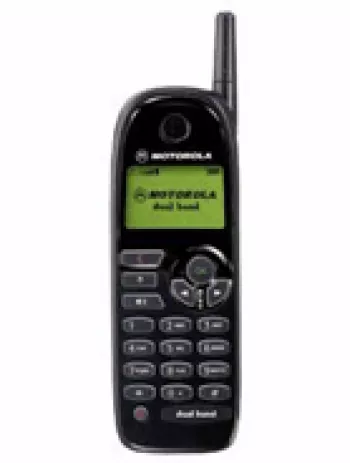
Launch and Market Context
The Motorola E360 was announced in October 2002, a period that can be described as a transitional phase in the mobile phone industry. This era saw a shift from basic communication devices to more sophisticated feature phones. The E360 occupied a space within the feature phone market, offering a set of characteristics that were relatively advanced for its time. However, like many devices of its period, the E360 has since been discontinued, marking its historical significance in the timeline of mobile technology.
Design and Build
Motorola designed the E360 with a form factor aimed at functionality and portability. Its dimensions were 115 x 44 x 20 mm (4.53 x 1.73 x 0.79 in), and it weighed only 85 g (3.00 oz), making it a compact and lightweight device. These characteristics made it convenient for users to carry around easily. The phone utilized a Mini-SIM, which was standard at the time. Available in two colors, blue and silver, it catered to user preferences for basic color choices.
Display
The E360 featured a CSTN display that could support 4096 colors, a modest offering compared to today’s high-definition screens, but reasonable during its release period. The screen resolution was 128 x 96 pixels with a 4:3 ratio, providing users with a basic visual display sufficient for navigating the phone’s menu and using simple applications.
Network Capabilities
The Motorola E360 operated on GSM technology, specifically supporting 2G bands (GSM 900/1800). It included GPRS capabilities, allowing users basic internet connectivity, a significant feature considering the technological constraints of the early 2000s. However, the device did not support EDGE, which was a limitation as network technology evolved.
Memory and Storage
The E360 came with limitations in memory and storage. There was no card slot for memory expansion, emphasizing its use strictly as a communication device. The phonebook could store up to 300 entries, which was quite substantial at the time. It recorded the last 10 dialed calls, 5 received, and 5 missed calls, providing essential logging functionality for users.
Battery Life
The phone had a removable Li-Ion 600 mAh battery, a standard power source for feature phones of its era. The E360's battery life was quite impressive, offering up to 170 hours on standby and up to 7 hours of talk time. This aspect was crucial for users who needed reliable communication devices without frequent recharging.
Sound and Alerts
Unlike many modern phones, the E360 did not have a loudspeaker; instead, it relied on vibration and polyphonic ringtones with a 16-note capacity for alerts. It also featured a ringtone composer, allowing users to personalize their tones. However, there was no 3.5mm audio jack, which limited its use for media playback. This reflects its primary focus on communication rather than media consumption.
Communication Features
Communication capabilities were centered around SMS and EMS 5.0 for message formatting. The device supported a WAP 1.2.1 browser, providing users with limited mobile internet access. Although these features may seem basic today, they were pivotal in the evolution of mobile communications.
Entertainment and Extras
The Motorola E360 included several built-in games: Smack, Magic, Memory, Torpedo, and Racing. These games added an entertainment aspect to the device, giving users simple yet engaging ways to pass the time. The absence of Java capabilities restricted additional application installations, keeping users within the confines of the phone's preset functionalities.
Conclusion and Legacy
The Motorola E360 stands as a testament to the technological advancements of the early 2000s. Despite its eventual discontinuation, the E360 represented a bridge between basic mobile phones and the sophisticated smartphones we use today. It exemplified key trends of its era, such as the integration of additional messaging formats and the attempt to provide limited internet access on mobile devices. While its specifications may seem rudimentary by modern standards, the E360 played a role in the evolution of mobile technology, contributing to the advancements that define current mobile communications.
Key Features of Motorola E360
- Announced in October 2002
- Compact dimensions: 115 x 44 x 20 mm
- Lightweight at 85 g
- Mini-SIM support
- CSTN display with 4096 colors
- Phonebook capacity of 300 contacts
- Polyphonic(16) ringtones with vibration alerts
- Removable Li-Ion 600 mAh battery
- Stand-by time up to 170 hours
- Talk time up to 7 hours
- WAP 1.2.1 browser for basic internet usage
- Includes 5 built-in games: Smack, Magic, Memory, Torpedo, Racing
- Available in two color options: blue and silver
Motorola E360 Drawbacks
- Lack of EDGE support for faster data connectivity.
- Discontinued model with no ongoing support.
- Limited display resolution with only 4096 colors.
- No expandable memory card slot.
- No camera feature available.
- No loudspeaker functionality.
- No 3.5mm audio jack for headphones.
- Absence of Bluetooth and WLAN connectivity.
- Limited positioning and radio functionality.
- Lack of USB connectivity options.
- Missing alarm feature.
- No Java support for additional applications.

View Also
More Phones
All Rights Reserved +14266 Phones © Mobilawy 2025

























